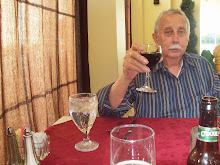Google's driverless car uses artificial
intelligence a Prius equipped with a variety of sensors to follow a route
programmed into the GPS navigation system. It nimbly accelerated in the entrance
lane and merged into fast-moving traffic on Highway 101, the freeway through
Silicon Valley. During a half-hour drive beginning on Google’s campus 35 miles
south of San Francisco . It drove at the speed limit, which it knew because the
limit for every road is included in its database, and left the freeway several
exits later. A device atop the car produced a detailed map of the environment.
The car then drove in city traffic through Mountain View,
stopping for lights and stop signs, as well as making announcements like “approaching
a crosswalk” (to warn the human at the wheel) or “turn ahead” in a pleasant
female voice. This same pleasant voice would, engineers said, alert the driver
if a master control system detected anything amiss with the various sensors.
I would bet that the type of programming used is what is
known as an expert system. An expert system is software made up of a set
of rules that analyze information
supplied by the user of the system about a specific class of problems,
as well as provide analysis of the problem(s), and, depending upon their
design, recommend a course of user action in order to implement corrections. In
a car driving program, the information fed to the expert system would be the
rules of the road, actions that a driver would take depending on the situation
and sensory input such as location of cars around it, speed limit, various
traffic signals and so forth.
Originally, the idea behind expert
systems was to provide help usually
provided by an expert in a particular field, such as software troubleshooting
or diagnosing an illness in a medical patient. Three features of expert systems
are rules of thumb, fuzzy logic and a data base of solutions. When an expert in
a field, such a physician, goes about solving a problem, such a determining
what ails a patient, he or she usually has several rule-of-thumb that he or she
uses. Depending upon the answers to key questions about the problem, the expert
knows what the solution is by applying a rule of thumb. For example, suppose a
patient complains about frequent severe headaches. After asking questions about
the headaches and other accompanying symptoms and perhaps performing some
tests, the doctor may determine that the person is suffering from migraines and
prescribe pills. In expert systems, these rules of thumb are coded into the
software.
Fuzzy logic is logic based on
approximations rather than formal logic. It takes into account such vague
statements as "almost," "nearly," and so forth, and
manipulates them to come up with an approximate answer. For example, if a
patient asks how much pain he or she is in and replies "not so much,"
this is considered less pain than "it hurts terribly." Certain
conclusion may be drawn by which answer is given.
Expert systems also usually have
large data bases which can be readily accessed using the rules of thumb and
fuzzy logic. Essentially, driving requires “rules of thumb” and “fuzzy logic”
sometimes.
Anyone who has gone to a software
web site and used their self troubleshooting system has probably used an expert
system. Computer games also use expert systems.
In my novel, The Isaac Project, the heart of the artificial intelligence being
developed is an expert system.



No comments:
Post a Comment